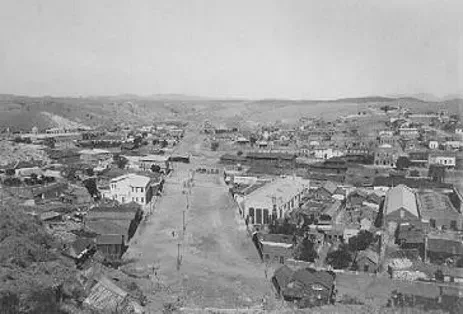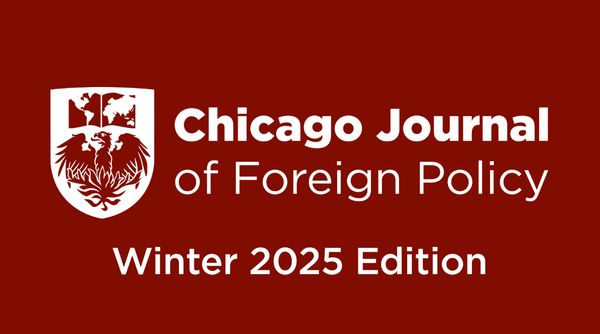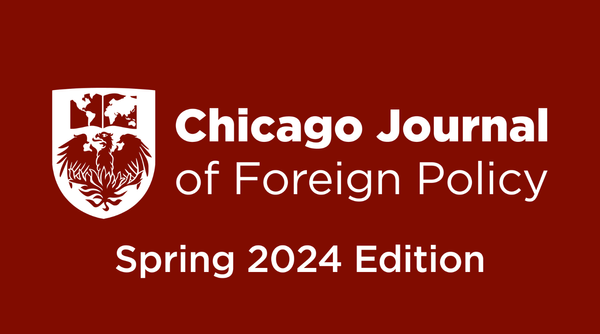Why Migrate to the United States? A Historical-Structural Analysis of Current Latin American Migrations to America Through the Cycle of Exploitation a

By Sihan Ren, University of Toronto
What causes migration to the US from the past to present day? This article attempts to explain the continued Latin American migration to the United States through the lens of historical-structural theories. By comparing Mexico’s Bracero program and the present day, a broader causality between migration to the United States and US-Latin America history emerges. A deeper historical-structural cause of Latin American migration to the United States can be established: the United States’ persistent colonial-like irresponsible exploitation of Latin America – whether it was the Bracero program or NAFTA – combined with racism created a closed-loop of migration and deportation. The persistence of American exploitation and racism against Latin America can further be conceptualized in the historical-structural framework, such as Harsha Walia’s “border imperialism”[1], which further shows the United States to be bearing the sole responsibility of Latin American migration to itself.
Comparing the past: The Bracero Program
The Bracero Program was a contracted Mexican agricultural labour program in the United States. The program reflected the two key themes still persistent today: exploitation and racism.
Walia theorizes exploitation to be “dispossessing communities to secure land and resources for state and capitalist interests”[2], thus creating migration. The act of using contract labour – an activity outlawed in the United States since 1885 for its resemblance to colonialism[3] – reflects the colonial – and thus exploitative – nature of the Bracero program. The exploitation was legalized in both 1935 and 1938, which excluded the Braceros as workers and denied them any rights[4]. Although the Braceros had the right to complain to American authorities regarding these violations, almost none of them were thoroughly addressed, as the agencies lacked adequate resources to do so[5].
However, more importantly, the Bracero program – through undocumented migrations – exposed the “hidden” racism within the US, regardless of their legal status. These undocumented migrants were called “wetbacks”[6] and were often associated with crime, violence, and other negative attributes, regardless of their actual legal status, which is directly reflected by the racial segregation policies against these workers in states such as Texas[7]. This reflected the deep racism within the US towards these Mexican migrants, who are excluded for being seen as “foreigners”. Later operations such as Operation Wetback further illustrate the deep racism within the US. Racism and exploitation would sustain through the Bracero program and eventually to today.
To the present day
Today’s persistent migration pattern to the United States strongly resembles the pattern witnessed during the program. This is because of the continuous American exploitation of Latin America and racism against migrants seen since the Bracero program. In other words, little has changed in the relationship between the migrants and the United States since the last century. It remains exploitative, driven by economic interests and functioning through deep racial convictions and violence. If anything, American exploitation has only intensified compared to the Bracero Program. NAFTA performed the same function of continuing the irresponsible and systematic exploitation of Latin America while using a fictitiously value-neutral system in its attempt to stop migrants. Specifically, NAFTA allowed the US to flood Mexico with cheap products, earning profits while causing massive unemployment and subsequent migration from Mexico to the US[8]. The mechanism of exploitation thus remains, in essence, similar to the Bracero Program, yet has also intensified since then in the degree of American economic exploitation, as people lose their livelihoods following the introduction of NAFTA[9]. It thus becomes unsurprising to find today’s migration pattern resembling that of the Bracero program.
However, other American actions further illustrate the latter stages of “border imperialism, ”[10] such as racialized profiling and the active forceful exclusion of migrants[11]-migrants are still being labelled as criminals. However, actions such as the fortification of the border fences since the Braceros era demonstrate the not only the US’ implicit racism but also a systematic intensification of migrant control. It further shows the explicit American intention of keeping migrants out not only physically, but also sociologically. Technology may have required Mexican laborers to physically work in the United States in previous decades, but they were kept out of American society: excluded, exploited, and unwelcomed. In other words, from an American perspective, these workers are forever “them”, not “us”. Today, it has remained the same, as the American economy exploits migrant workers while attempting its best to keep them out with measures designed to ensure the exclusion of migrants. Compared to the Bracero era, racism has only become more systematic, as seen within the American immigration system, which is under-resourced, and significantly reliant on the judges’ personal views over codified rules in determining individual cases[12], with defendants hardly ever receiving legal assistance, resulting most of them being deported[13].


The US-Mexico border near Nogales, Arizona, 1899 versus 2007. A clear process of fortification of the border can be seen.
“Nogales AZ-Mexico border in 1899” provided by the Arizona Historical Society. Licensed under Public Domain) and “Mexican-American border at Nogales” by Sgt. 1st Class Gordon Hyde. Licensed under Public Domain in the United States)”
Conclusion: A perpetuated cycle
In essence, the cause of migration to the US today is a historical-structural one: the cycle of exploitation and racism created the persisting migration. In this process, exploitation has prompted migration. However, racism within the United States causes migration to be forcefully turned back into further exploitation, where people are detained or deported. Analyzing the Bracero program and comparing it with today not only shows the deeper historical roots of these factors, but also the intensification and systematization of the process, designed to perpetuate this cycle of migration. Therefore, unless this cycle can be broken, migration to the US will undoubtedly perpetuate.
[1] Walia, Harsha. 2014. Undoing Border Imperialism. New York: AK Press. 23
[2] Ibid., 23
[3] Ngai, Mae M. 2004. Impossible Subjects : Illegal Aliens and the Making of Modern America. Princeton ;: Princeton University Press. 137
[4] Ibid., 136
[5] Ibid., 144
[6] Ibid., 127
[7] Ibid., 147-149
[8] Getzels, Peter, Eduardo López, Wendy Thompson-Marquez, Rigoberta Menchú, Jesse Jackson, Anthony D. Romero, Junot Díaz, et al. 2017. Harvest of Empire. Tampa, Florida: Onyx Media Group. 1:22:12
[9] Ibid.
[10] Walia, Harsha. 2014. Undoing Border Imperialism. 23
[11] Ibid.
[12] García, María Cristina. 2017. The Refugee Challenge in Post-Cold War America. New York, NY: Oxford University Press.187-188
[13] Ibid., 158





